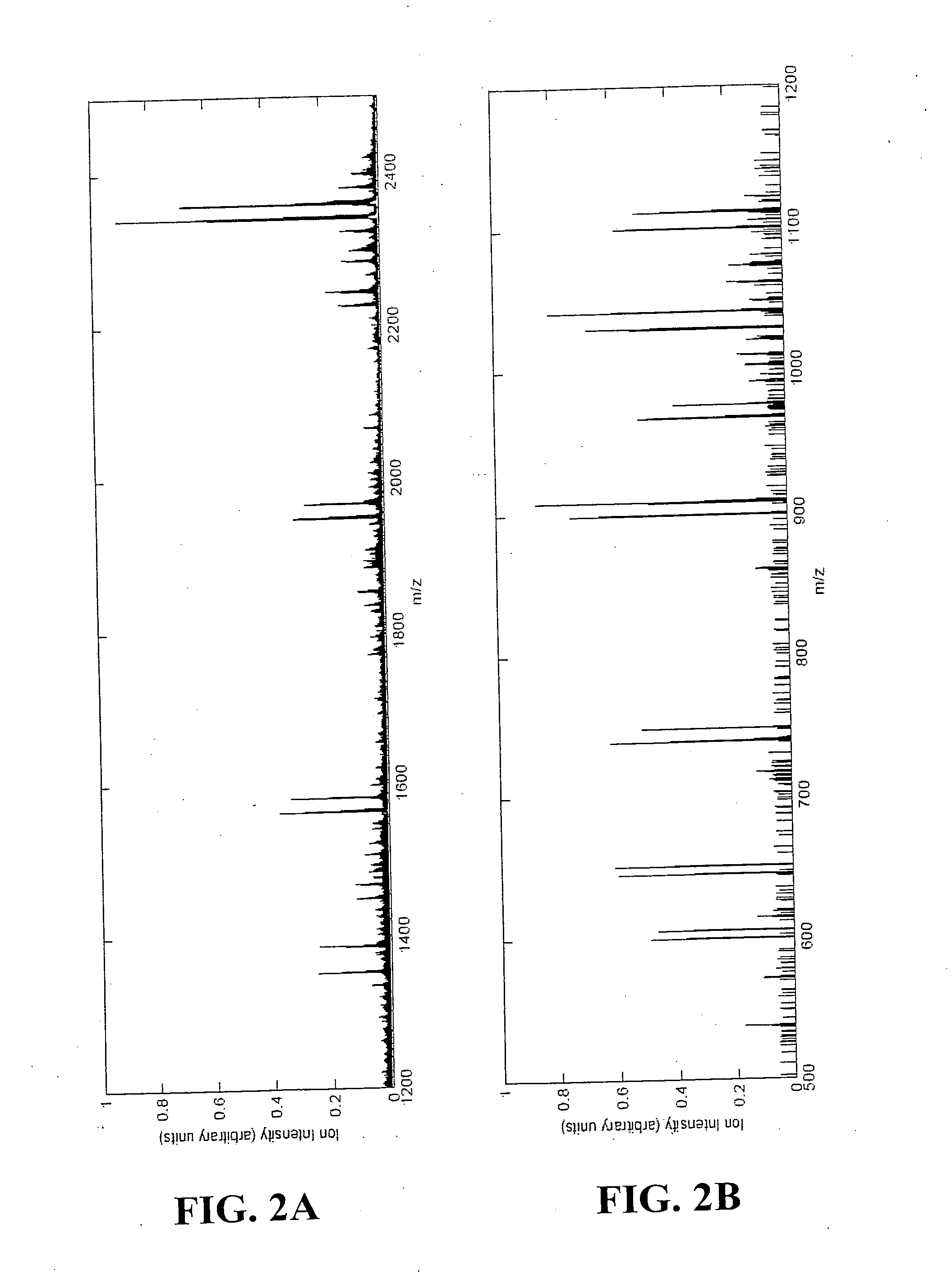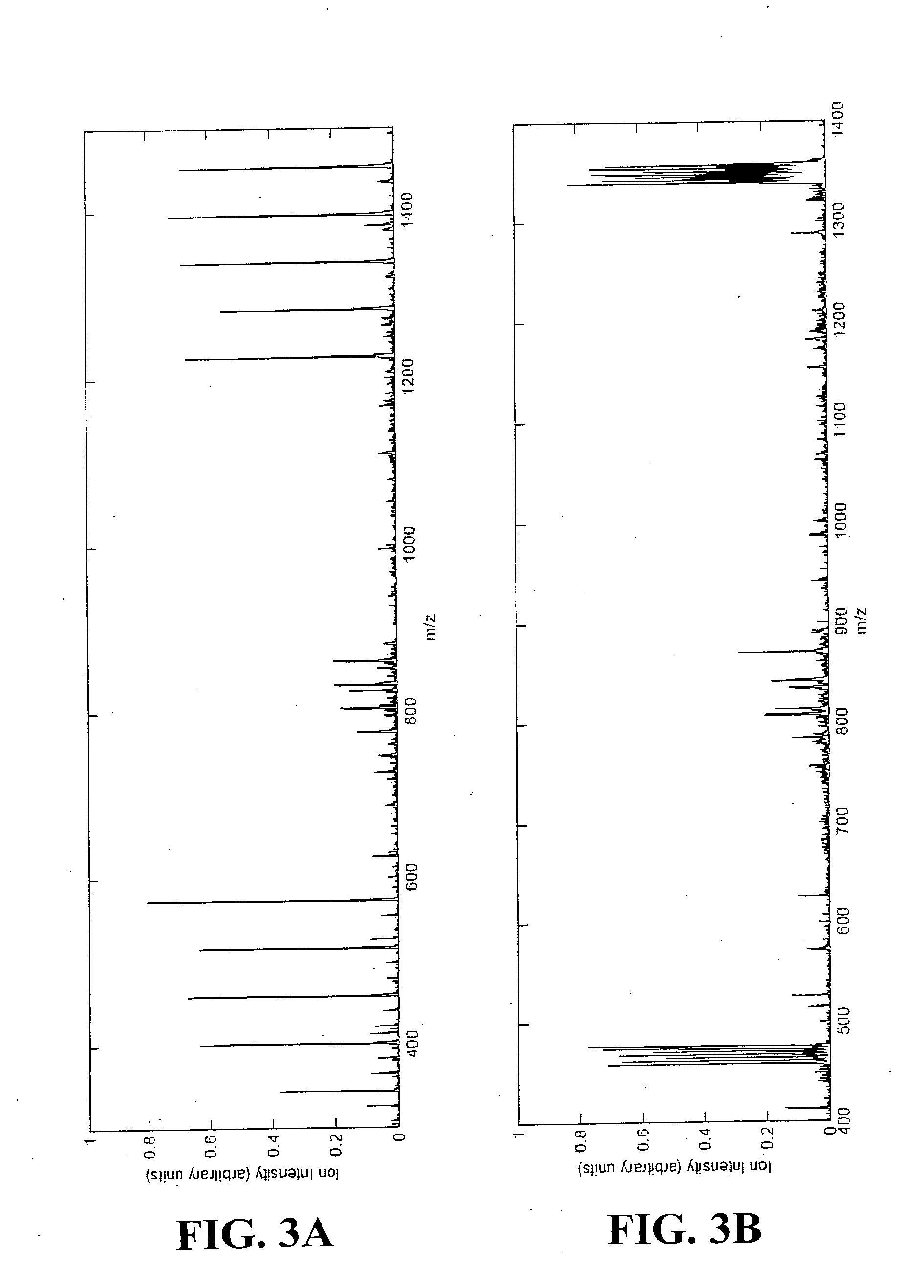Ultra-sensitive detection systems using multidimension signals
a detection system and multi-dimensional technology, applied in the direction of peptides, instruments, isotope introduction of peptides/proteins, etc., can solve the problems of radioactive labels being dangerous and difficult to handle, fluorescent labels having limited multiplex detection capacity, and most have significant drawbacks and limitations
- Summary
- Abstract
- Description
- Claims
- Application Information
AI Technical Summary
Benefits of technology
Problems solved by technology
Method used
Image
Examples
examples
[0526] This example provides an example of the disclosed methods involving labeling of proteins with multidimension signals and pattern recognition in the MS dimension for collection and analysis of MS / MS data.
[0527] Consider a two-sample assay as shown in FIG. 1. In this assay, bovine serum albumin (BSA) was chosen as an exemplary protein. A common BSA sample was split into two parts (constituting the two samples), and reacted with sets of multidimension signals (Table 3).
[0528] Two sets of multidimension labels were used (Label Set 1 and Label Set 2; see Table 3). The members of a given set are isobaric (all the members of Label Set 1 are isobaric to each other and all the members of Label Set 2 are isobaric to each other). That is, within the sets the labels are isobaric. Such sets can be referred to as isobaric sets. The members of Label Set 1 are not isobaric to the member of Label Set 2. That is, Label Set 1 and Label Set 2 are not isobaric to each other. The specifics of th...
PUM
| Property | Measurement | Unit |
|---|---|---|
| mass | aaaaa | aaaaa |
| mass | aaaaa | aaaaa |
| diameter | aaaaa | aaaaa |
Abstract
Description
Claims
Application Information
 Login to View More
Login to View More - R&D
- Intellectual Property
- Life Sciences
- Materials
- Tech Scout
- Unparalleled Data Quality
- Higher Quality Content
- 60% Fewer Hallucinations
Browse by: Latest US Patents, China's latest patents, Technical Efficacy Thesaurus, Application Domain, Technology Topic, Popular Technical Reports.
© 2025 PatSnap. All rights reserved.Legal|Privacy policy|Modern Slavery Act Transparency Statement|Sitemap|About US| Contact US: help@patsnap.com



